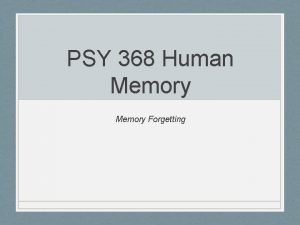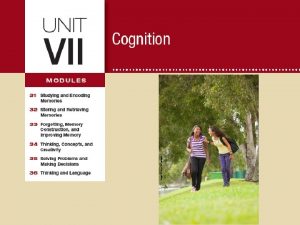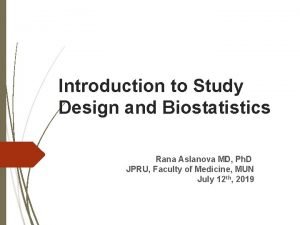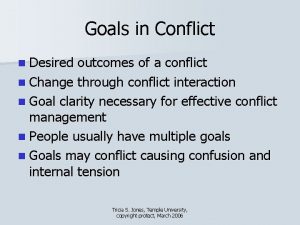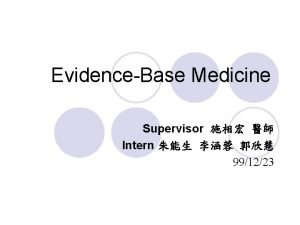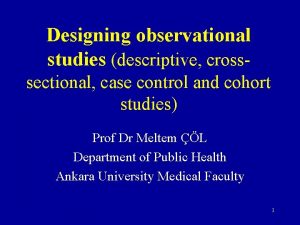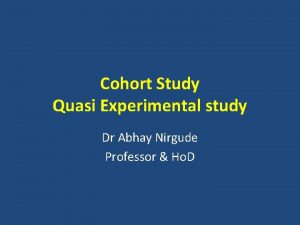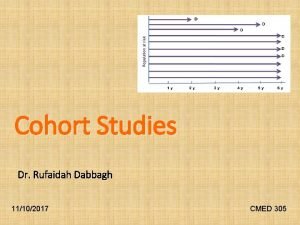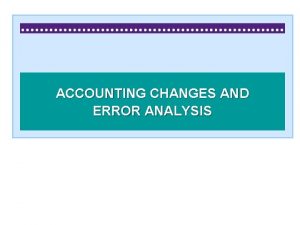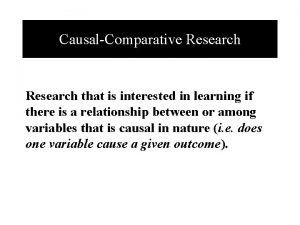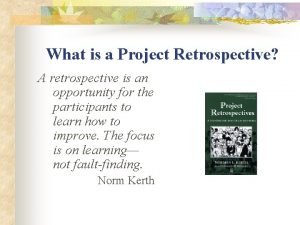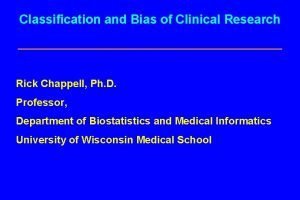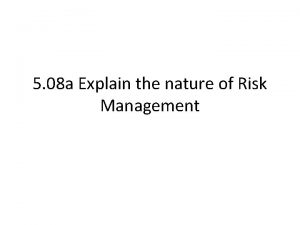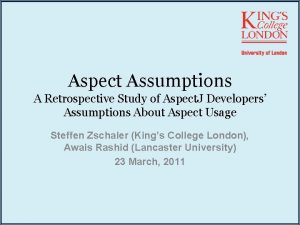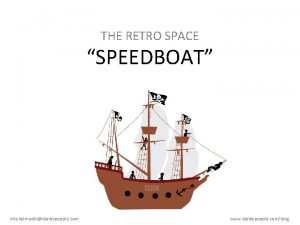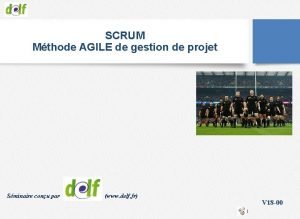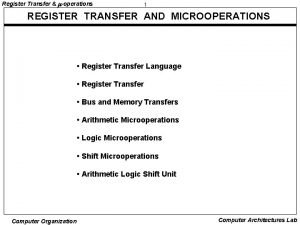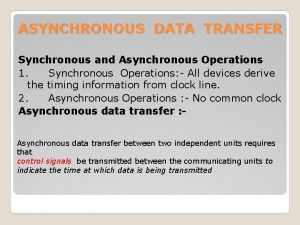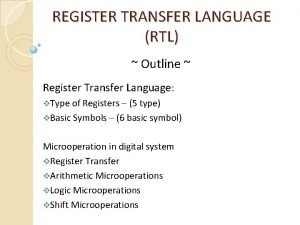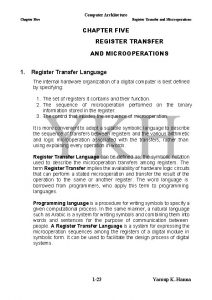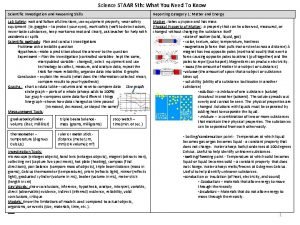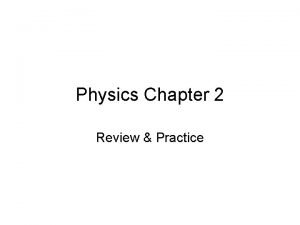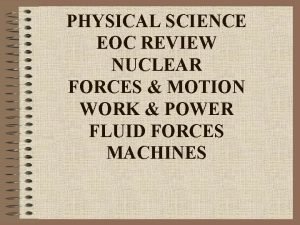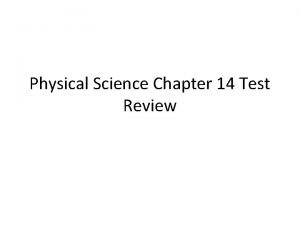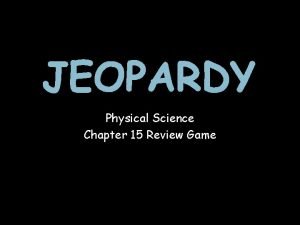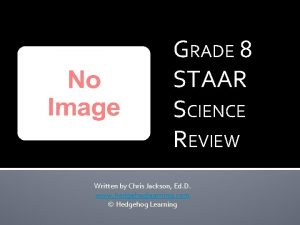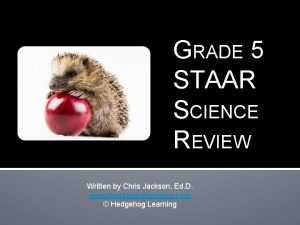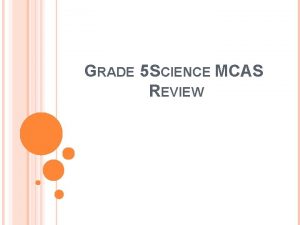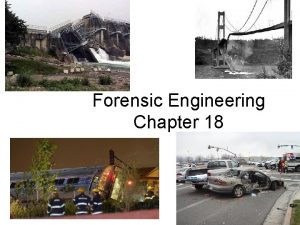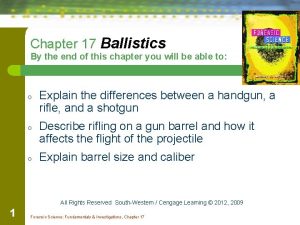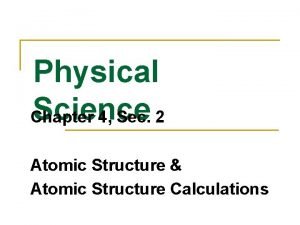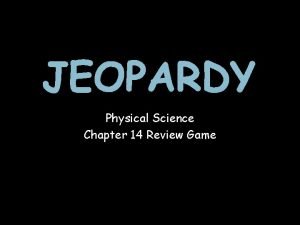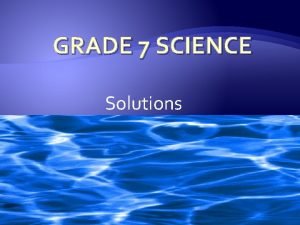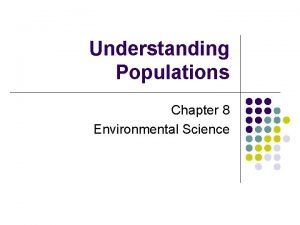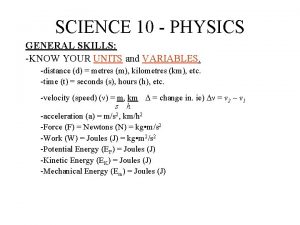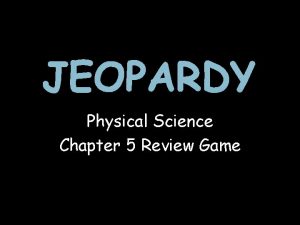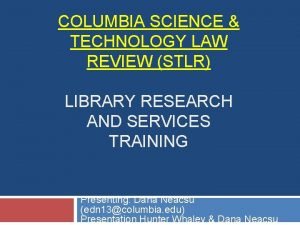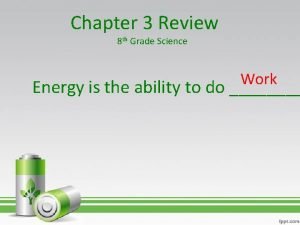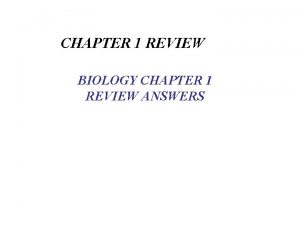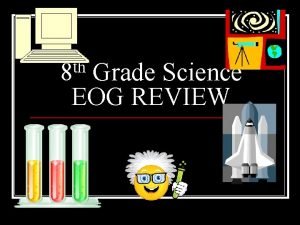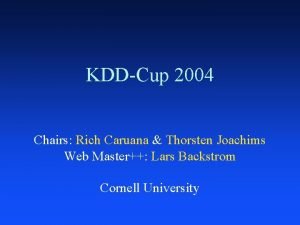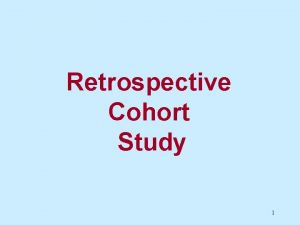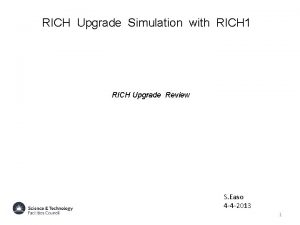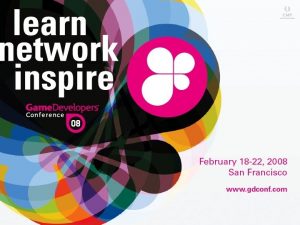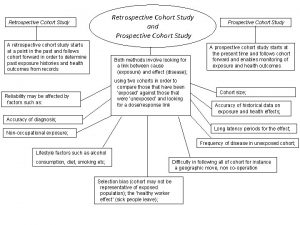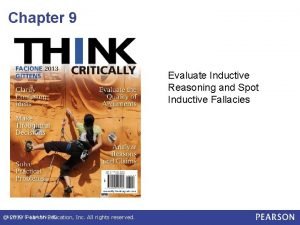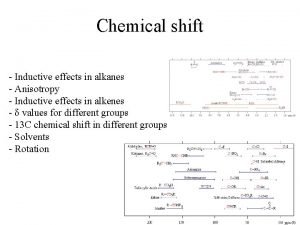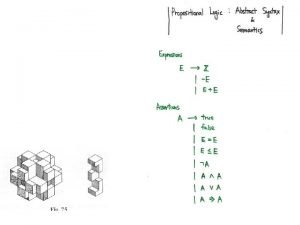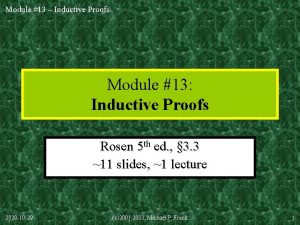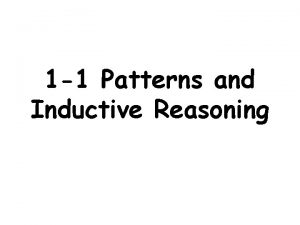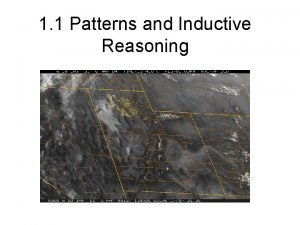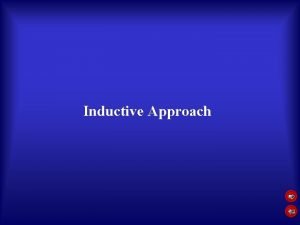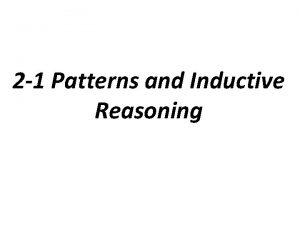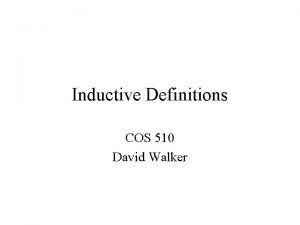Inductive Transfer Retrospective Review Rich Caruana Computer Science


![Rich Sutton [1994] Constructive Induction Workshop: “Everyone knows that good representations are key to Rich Sutton [1994] Constructive Induction Workshop: “Everyone knows that good representations are key to](https://slidetodoc.com/presentation_image_h/3701b0c854f3bb7b82f0ba4c661e7476/image-3.jpg)


































































![Related Work – – – Sejnowski, Rosenberg [1986]: NETtalk Pratt, Mostow [1991 -94]: serial Related Work – – – Sejnowski, Rosenberg [1986]: NETtalk Pratt, Mostow [1991 -94]: serial](https://slidetodoc.com/presentation_image_h/3701b0c854f3bb7b82f0ba4c661e7476/image-70.jpg)





- Slides: 75

Inductive Transfer Retrospective & Review Rich Caruana Computer Science Department Cornell University

Inductive Transfer: Bias Learning Multitask learning Learning (Internal) Representations Learning-to-learn Lifelong learning Continual learning Speedup learning Hints Hierarchical Bayes … a. k. a. …
![Rich Sutton 1994 Constructive Induction Workshop Everyone knows that good representations are key to Rich Sutton [1994] Constructive Induction Workshop: “Everyone knows that good representations are key to](https://slidetodoc.com/presentation_image_h/3701b0c854f3bb7b82f0ba4c661e7476/image-3.jpg)
Rich Sutton [1994] Constructive Induction Workshop: “Everyone knows that good representations are key to 99% of good learning performance. Why then has constructive induction, the science of finding good representations, been able to make only incremental improvements in performance? People can learn amazingly fast because they bring good representations to the problem, representations they learned on previous problems. For people, then, constructive induction does make a large difference in performance. … The standard machine learning methodology is to consider a single concept to be learned. That itself is the crux of the problem… This is not the way to study constructive induction! … The standard one-concept learning task will never do this for us and must be abandoned. Instead we should look to natural learning systems, such as people, to get a better sense of the real task facing them. When we do this, I think we find the key difference that, for all practical purposes, people face not one task, but a series of tasks. The different tasks have different solutions, but they often share the same useful representations. … If you can come to the nth task with an excellent representation learned from the preceding n-1 tasks, then you can learn dramatically faster than a system that does not use constructive induction. A system without constructive induction will learn no faster on the nth task than on the 1 st. …”

Transfer through the Ages 1986: Sejnowski & Rosenberg – NETtalk 1990: Dietterich, Hild, Bakiri – ID 3 vs. NETtalk 1990: Suddarth, Kergiosen, & Holden – rule injection (ANNs) 1990: Abu-Mostafa – hints (ANNs) 1991: Dean Pomerleau – ALVINN output representation (ANNs) 1991: Lorien Pratt – speedup learning (ANNs) 1992: Sharkey & Sharkey – speedup learning (ANNs) 1992: Mark Ring – continual learning 1993: Rich Caruana – MTL (ANNs, KNN, DT) 1993: Thrun & Mitchell – EBNN 1994: Virginia de Sa – minimizing disagreement 1994: Jonathan Baxter – representation learning (and theory) 1994: Thrun & Mitchell – learning one more thing 1994: J. Schmidhuber – learning how to learning strategies

1994: Dietterich & Bakiri: ECOC outputs 1995: Breiman & Friedman – Curds & Whey 1995: Sebastian Thrun – LLL (learning-to-learn, lifelong-learning) 1996: Danny Silver – parallel transfer (ANNs) 1996: O’Sullivan & Thrun – task clustering (KNN) 1996: Caruana & de Sa – inputs better as outputs (ANNs) 1997: Munro & Parmanto – committee machines (ANNs) 1998: Blum & Mitchell – co-training 2002: Ben-David, Gehrke, Schuller – theoretical framework 2003: Bakker & Heskes – Bayesian MTL (and task clustering) 2004: Tony Jebara – MTL in SVMs (feature and kernel selection) 2004: Pontil & Micchelli – Kernels for MTL 2004: Lawrence & Platt – MTL in GP (info vector machine) 2005: Yu, Tresp, Schwaighofer – MTL in GP 2005: Lia & Carin – MTL for RBF Networks

A Quick Romp Through Some Stuff

1 Task vs. 2 Tasks vs. 4 Tasks

STL vs. MTL Learning Curves courtesy Joseph O’Sullivan

STL vs. MTL Learning Curves

A Different Kind of Learning Curve

MTL for Bayes Net Structure Learning B Yeast 1 Yeast 2 A A B D C B A D D C E Yeast 3 C E E Bayes Nets for these three species overlap significantly Learn structures from data for each species separately? No. Learn one structure for all three species? No. Bias learning to favor shared structure while allowing some differences? Yes -- makes most of limited data.

When to Use Inductive Transfer? multiple tasks occur naturally using future to predict present time series decomposable tasks multiple error metrics focus of attention different data distributions for same/similar problems hierarchical tasks some input features work better as outputs …

Multiple Tasks Occur Naturally Mitchell’s Calendar Apprentice (CAP) – time-of-day (9: 00 am, 9: 30 am, . . . ) – day-of-week (M, T, W, . . . ) – duration (30 min, 60 min, . . . ) – location (Tom’s office, Dean’s office, 5409, . . . )

Using Future to Predict Present medical domains autonomous vehicles and robots time series – – stock market economic forecasting weather prediction spatial series many more

Decomposable Tasks Dire. Outcome = ICU v Complication v Death INPUTS

Focus of Attention Single-Task ALVINN Multi-Task ALVINN

Different Data Distributions Hospital 1: 50 cases, rural (Ithaca) Hospital 2: 500 cases, mature urban (Des Moines) Hospital 3: 1000 cases, elderly suburbs (Florida) Hospital 4: 5000 cases, young urban (LA, SF)

Some Inputs are Better as Outputs

And many more uses of Xfer…

A Few Issues That Arise With Xfer

Issue #1: Interference

Issue #1: Interference

Issue #2: Task Selection/Weighting Analogous to feature selection Correlation between tasks – heuristic works well in practice – very suboptimal Wrapper-based methods – – – expensive benefit from single tasks can be too small to detect reliably does not examine tasks in sets Task weighting: – – – MTL ≠ one model for all tasks main task vs. all tasks even harder than task selection but yields best results

Issue #3: Parallel vs. Serial Transfer Where possible, use parallel transfer – All info about a task is in the training set, not necessarily a model trained on that train set – Information useful to other tasks can be lost training one task at a time – Tasks often benefit each other mutually When serial is necessary, implement via parallel task rehearsal Storing all experience not always feasible

Issue #4: Psychological Plausibility ?

Issue #5: Xfer vs. Hierarchical Bayes Is Xfer just regularization/smoothing? Yes and No Yes: – Similar models for different problem instances e. g. similar stocks, data distributions, … No: – Focus of attention – Task selection/clustering/rehearsal

Issue #6: What does Related Mean? related helps learning (e. g. , copy task)

Issue #6: What does Related Mean? related helps learning (e. g. , copy task) helps learning related (e. g. , noise task)

Issue #6: What does Related Mean? related helps learning (e. g. , copy task) helps learning related (e. g. , noise task) related correlated (e. g. , A+B, A-B)

Why Doesn’t Xfer Rule the Earth? Tabula rasa learning surprisingly effective the UCI problem

Use Some Features as Outputs

Why Doesn’t Xfer Rule the Earth? Tabula rasa learning surprisingly effective the UCI problem Xfer opportunities abound in real problems Somewhat easier with ANNs (and Bayes nets) Death is in the details – Xfer often hurts more than it helps if not careful – Some important tricks counterintuitive Ç don’t share too much Ç give tasks breathing room Ç focus on one task at a time

What Needs to be Done? Have algs for ANN, KNN, DT, SVM, GP, BN, … Better prescription of where to use Xfer Public data sets Comparison of Methods Inductive Transfer Competition? Task selection, task weighting, task clustering Explicit (TC) vs. Implicit (backprop) Xfer Theory/definition of task relatedness





Kinds of Transfer Human Expertise – Constraints – Hints (monotonicity, smoothness, …) Parallel – Multitask Learning Serial – Learning-To-Learn – Serial via parallel (rehearsal)

Motivating Example 4 tasks defined on eight bits B 1 -B 8: all tasks ignore input bits B 7 -B 8

Goals of MTL improve predictive accuracy – not intelligibility – not learning speed exploit “background” knowledge applicable to many learning methods exploit strength of current learning methods: surprisingly good tabula rasa performance

Problem 2: 1 D-Doors color camera on Xavier robot main tasks: doorknob location and door type 8 extra tasks (training signals collected by mouse): – – doorway width location of doorway center location of left jamb, right jamb location of left and right edges of door

Predicting Pneumonia Risk Pre-Hospital Attributes In-Hospital Attributes Chest X-Ray Age Gender Blood Pressure Pneumonia Risk RBC Count Albumin Blood p. O 2 White Count Chest X-Ray Age Gender Blood Pressure Pneumonia Risk Pre-Hospital Attributes

Pre-Hospital Attributes Age Gender Blood Pressure Chest X-Ray Age Gender Blood Pressure Pneumonia Risk Chest X-Ray Pneumonia Risk Pre-Hospital Attributes Albumin Blood p. O 2 White Count Predicting Pneumonia Risk RBC Count In-Hospital Attributes

Pneumonia #1: Medis

Pneumonia #1: Results -10. 8% -11. 8% -6. 2% -6. 9% -5. 7%

Use imputed values for missing lab tests as extra inputs?

Pneumonia #1: Feature Nets

Pneumonia #2: Results MTL reduces error >10%

Related? Ideal: Func (Main. Task, Extra. Task, Alg) = 1 iff Alg (Main. Task || Extra. Task) > Alg (Main. Task) unrealistic try all extra tasks (or all combinations)? need heuristics to help us find potentially useful extra tasks to use for MTL: Related Tasks

Related? related helps learning (e. g. , copy tasks)

Related? related helps learning (e. g. , copy task) helps learning related (e. g. , noise task)

Related? related helps learning (e. g. , copy task) helps learning related (e. g. , noise task) related correlated (e. g. , A+B, A-B)

120 Synthetic Tasks backprop net not told how tasks are related, but. . . 120 Peaks Functions: A, B, C, D, E, F (0. 0, 1. 0) – – – P 001 = If (A > 0. 5) Then B, Else C P 002 = If (A > 0. 5) Then B, Else D P 014 = If (A > 0. 5) Then E, Else C P 024 = If (B > 0. 5) Then A, Else F P 120 = If (F > 0. 5) Then E, Else D

MTL nets cluster tasks by function

Peaks Functions: Clustering

Focus of Attention 1 D-ALVINN: – centerline – left and right edges of road removing centerlines from 1 D-ALVINN images hurts MTL accuracy more than STL accuracy

Some Inputs are Better as Outputs Main. Task = Sigmoid(A)+Sigmoid(B) A, B Inputs A and B coded via 10 -bit binary code

Inputs Better as Outputs: Results

MTL in K-Nearest Neighbor Most learning methods can MTL: – shared representation – combine performance of extra tasks – control the effect of extra tasks MTL in K-Nearest Neighbor: – shared representation: distance metric – MTLPerf = (1 - ) Main. Perf + ( Extra. Perf)

Summary inductive transfer improves learning >15 problem types where MTL is applicable: – using the future to predict the present – multiple metrics – focus of attention – different data populations – using inputs as extra tasks –. . . (at least 10 more) most real-world problems fit one of these

Summary/Contributions applied MTL to a dozen problems, some not created for MTL – MTL helps most of the time – benefits range from 5%-40% ways to improve MTL/Backprop – – – learning rate optimization private hidden layers MTL Feature Nets MTL nets do unsupervised learning/clustering algorithms for MTL: ANN, KNN, SVMs, DTs

Open Problems output selection scale to 1000’s of extra tasks compare to Bayes Nets theory of MTL task weighting features as both inputs and extra outputs

Features as Both Inputs & Outputs some features help when used as inputs some of those also help when used as outputs get both benefits in one net?

Summary/Contributions focus on main task improves performance >15 problem types where MTL is applicable: – using the future to predict the present – multiple metrics – focus of attention – different data populations – using inputs as extra tasks –. . . (at least 10 more) most real-world problems fit one of these

Summary/Contributions applied MTL to a dozen problems, some not created for MTL – MTL helps most of the time – benefits range from 5%-40% ways to improve MTL/Backprop – – – learning rate optimization private hidden layers MTL Feature Nets MTL nets do unsupervised clustering algs for MTL k. NN and MTL Decision Trees

Future MTL Work output selection scale to 1000’s of extra tasks theory of MTL compare to Bayes Nets task weighting “features” as both inputs and extra outputs

Inputs as Outputs: DNA Domain given sequence of 60 DNA nucleotides, predict if sequence is {I E, E I, neither} . . . ACAGTACGTTGCATTACCCTCGTT. . . {I E, E I, neither} nucleotides {A, C, G, T} coded with 3 bits 3 * 60 = 180 inputs; 3 binary outputs

Making MTL/Backprop Better training algorithm: – learning rate optimization Better architectures: – private hidden layers (overfitting in hidden unit space) – using features as both inputs and outputs – combining MTL with Feature Nets

Private Hidden Layers many tasks: need many hidden units: “hidden unit selection problem” allow sharing, but without too many hidden units?
![Related Work Sejnowski Rosenberg 1986 NETtalk Pratt Mostow 1991 94 serial Related Work – – – Sejnowski, Rosenberg [1986]: NETtalk Pratt, Mostow [1991 -94]: serial](https://slidetodoc.com/presentation_image_h/3701b0c854f3bb7b82f0ba4c661e7476/image-70.jpg)
Related Work – – – Sejnowski, Rosenberg [1986]: NETtalk Pratt, Mostow [1991 -94]: serial transfer in bp nets Suddarth, Kergiosen [1990]: 1 st MTL in bp nets Abu-Mostafa [1990 -95]: catalytic hints Abu-Mostafa, Baxter [92, 95]: transfer PAC models Dietterich, Hild, Bakiri [90, 95]: bp vs. ID 3 Pomerleau, Baluja: other uses of hidden layers Munro [1996]: extra tasks to decorrelate experts Breiman [1995]: Curds & Whey de Sa [1995]: minimizing disagreement Thrun, Mitchell [1994, 96]: EBNN O’Sullivan, Mitchell [now]: EBNN+MTL+Robot

MTL vs. EBNN on Robot Problem courtesy Joseph O’Sullivan

Theoretical Models of Parallel Xfer PAC models based on VC-dim or MDL – unreasonable assumptions Ç fixed size hidden layers Ç all tasks generated by one hidden layer Ç backprop is ideal search procedure – predictions do not fit observations Ç have to add hidden units – main problems: Ç can't take behavior of backprop into account Ç not enough is known about capacity of backprop nets

Learning Rate Optimization optimize learning rates of extra tasks goal is maximize generalization of main task ignore performance of extra tasks expensive! performance on extra tasks improves 9%!

MTL Feature Nets

Acknowledgements advisors: Mitchell & Simon committee: Pomerleau & Dietterich CEHC: Cooper, Fine, Buchanan, et al. co-authors: Baluja, de Sa, Freitag robot Xavier: O’Sullivan, Simmons discussion: Fahlman, Moore, Touretzky funding: NSF, ARPA, DEC, CEHC, JPRC SCS/CMU: a great place to do research spouse: Diane
 Antoinette caruana
Antoinette caruana Andrew caruana galizia
Andrew caruana galizia My favourite subject english
My favourite subject english Deductive reasoning definition literature
Deductive reasoning definition literature Types of study design
Types of study design Retrospective cohort study
Retrospective cohort study Retrospective memory
Retrospective memory Retroactive vs proactive interference
Retroactive vs proactive interference What's labeling theory
What's labeling theory Prospective and retrospective difference
Prospective and retrospective difference Transactive goals
Transactive goals Patient chart
Patient chart Retrospective cohort study vs case control
Retrospective cohort study vs case control Quasi experimental study
Quasi experimental study Retrospective cohort study
Retrospective cohort study Counterbalancing errors
Counterbalancing errors Release retrospective
Release retrospective Retrospective causal-comparative research
Retrospective causal-comparative research What is a project retrospective
What is a project retrospective Retrospective studies pros and cons
Retrospective studies pros and cons Supplier rebate accrual
Supplier rebate accrual Nature of risk
Nature of risk Retrospective aspect
Retrospective aspect Speedboat retro
Speedboat retro Retrospective agile
Retrospective agile Validation definition
Validation definition Prospective validation
Prospective validation Norm kerth retrospective prime directive
Norm kerth retrospective prime directive Disturbance that transfers energy
Disturbance that transfers energy Proses transfer informasi
Proses transfer informasi Register transfer and microoperations
Register transfer and microoperations Dma timing diagram
Dma timing diagram Define register transfer language
Define register transfer language Microoperations
Microoperations Chapter review motion part a vocabulary review answer key
Chapter review motion part a vocabulary review answer key Writ of certiorari ap gov example
Writ of certiorari ap gov example Narrative review vs systematic review
Narrative review vs systematic review Systematic review definition
Systematic review definition Narrative review vs systematic review
Narrative review vs systematic review 8th grade science staar review reporting category 4
8th grade science staar review reporting category 4 Earth science lab practical
Earth science lab practical Glencoe physical science chapter 2 review answers
Glencoe physical science chapter 2 review answers Science eoc review
Science eoc review Physical science eoc review
Physical science eoc review Section 4 review physical science
Section 4 review physical science Physical science chapter 14 review
Physical science chapter 14 review Chapter 15 review physical science
Chapter 15 review physical science Day 8 8th grade science staar review
Day 8 8th grade science staar review Science staar review
Science staar review Grade 5 science mcas
Grade 5 science mcas Forensic science chapter 18 review answers
Forensic science chapter 18 review answers End of semester test environmental science a edmentum
End of semester test environmental science a edmentum Chapter 11 water
Chapter 11 water Earth science sol review
Earth science sol review Nibis ballistics definition
Nibis ballistics definition Chapter 14 forensic anthropology
Chapter 14 forensic anthropology Environmental science chapter 13
Environmental science chapter 13 Chapter 4 review physical science
Chapter 4 review physical science Chapter 14 review physical science
Chapter 14 review physical science Solubility grade 7
Solubility grade 7 Chapter 8 environmental science
Chapter 8 environmental science Tools of environmental science
Tools of environmental science Science 10 physics review
Science 10 physics review Earth science review book
Earth science review book Physical science jeopardy
Physical science jeopardy Chapter 5 review physical science
Chapter 5 review physical science Earth science final exam review
Earth science final exam review Earth science prologue review
Earth science prologue review Physical science chapter 6 review answers
Physical science chapter 6 review answers Columbia science and technology law review
Columbia science and technology law review Chapter 3 review 8th grade science
Chapter 3 review 8th grade science Biology chapter 1 assessment answers
Biology chapter 1 assessment answers What are the 3 levels of biodiversity
What are the 3 levels of biodiversity Forensic science unit 1 review
Forensic science unit 1 review 5th grade science eog review
5th grade science eog review Chapter 16 review physical science
Chapter 16 review physical science






